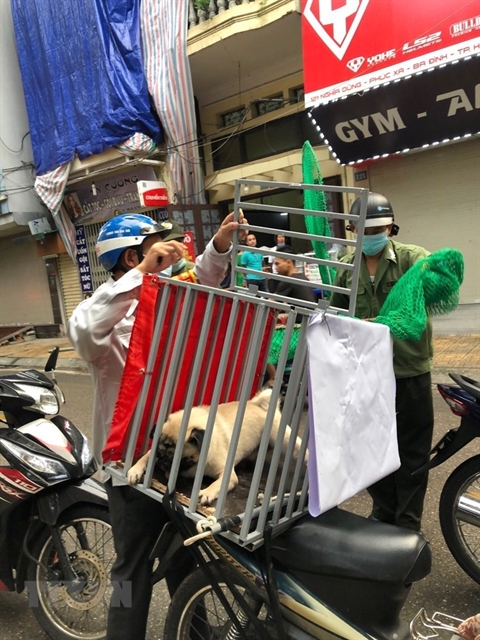 Society
Society


|
| A roaming dog on the streets of Ba Đình District, Hà Nội, is captured by a special team. — VNA/VNS Photo |
HÀ NỘI — The capital plans to set up a team to capture stray dogs and suspected rabies-infected cases in each of its 579 communes, wards, and townships as part of efforts to curb rabies.
The action plan for rabies control in the city was signed into effect by Nguyễn Mạnh Quyền, vice chair of the Hà Nội People’s Committee, with the aim of full management of rabies in domestic dogs and cats, and no deaths from rabies by 2030.
The plan targets having 90 per cent of all dogs and cats vaccinated against rabies every year from 2022 to 2030, with all districts, communes, and townships having good supervision over cats and dogs suspected of having rabies.
The plan states that all pet owners will have to register their pets and declare pet ownership with the local People’s Committees, and commit to keeping dogs within the confinement of their residence to avoid causing risks to the public, vaccinating pets, and using rabies vaccination tags.
Pet owners will have to bear all related fees if their dogs are captured, including caretaking costs and culling if needed.
If dogs and cats bite or scratch other people, owners will also be expected to pay compensation to the victims.
All local administrations are asked to work with veterinary authorities to provide training on dog catching (especially suspected rabies cases) for team members and provide vaccinations against rabies.
Nguyễn Ngọc Sơn, head of the city’s veterinary department, said the team for catching stray dogs was only one of the actions to ensure rabies-free zones.
Other responsibilities include raising awareness among the pet owners on legal regulations, issuance of fines to pet owners who fail to muzzle/chain their dogs in public and preventing attacks by wild dogs.
The four urban districts of Hoàn Kiếm, Đống Đa, Ba Đình, and Thanh Xuân have already deployed such teams, and the veterinary department is working with the remaining eight urban districts on capacity training, expected to be wrapped up by next year.
The deployment of such teams in rural, outlying districts might not be feasible as people let dogs roam freely over a large area to protect their property, though this will need to change in future with awareness campaigns, Sơn noted.
The teams usually comprise six to eight members, including a police officer, veterinary worker, local militia members and volunteers. — VNS




